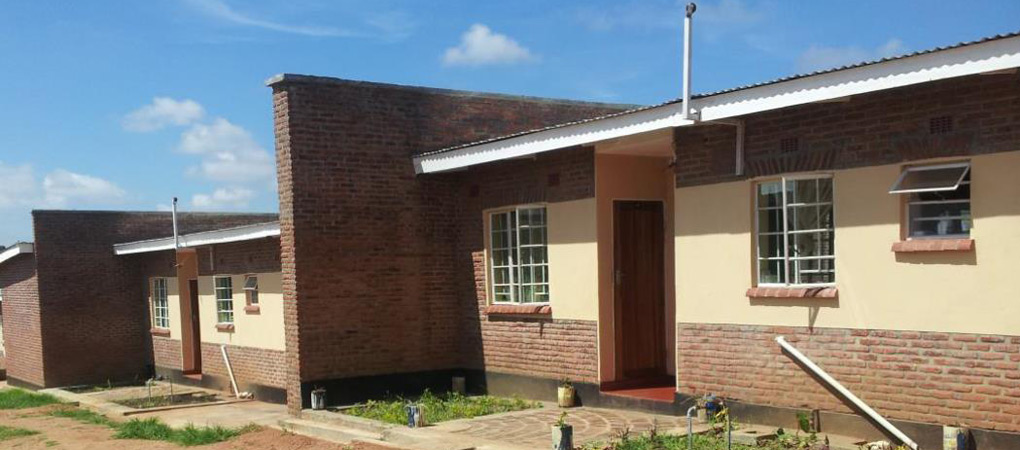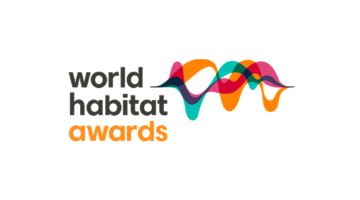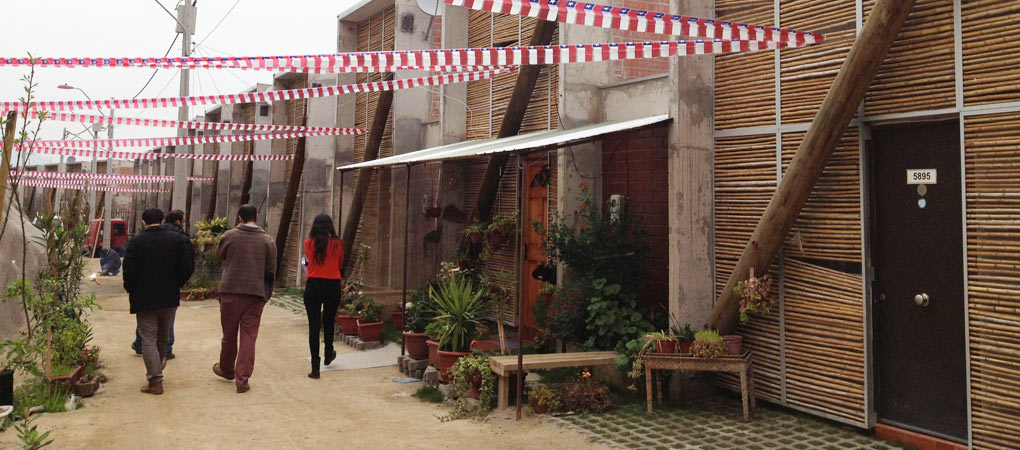Empowering the Poor: building the capacity of urban and rural communities
Main objectives of the project
Date
- 2015:
Stakeholders
- Promotor: World Habitat
Location
City: Lilongwe
Country/Region: Lilongwe, Malawi
Description
Following the Slum Dwellers International approach and challenging Malawi’s ‘hand out culture’, this project is very much community-driven. It focuses on poor communities across the country, particularly in urban areas, and takes a comprehensive approach to development by empowering communities to organise, improve their living conditions and infrastructure, and increase their incomes by setting up viable enterprises.
Project Description
Aims and Objectives
The main aim is to empower poor people so that they are able to transform their own lives. This is done by working with the Federation of the Rural and Urban Poor using the Slum Dwellers International approach in the following areas:
- Development of poor people’s organisations: carrying out activities such as assessment of community needs; developing partnerships; community-to-community learning; fundraising; community mobilisation and awareness campaigns; training on leadership, governance, financial management and budgeting.
- Community data for change: empowering organisations with skills and knowledge to collect and present data about their communities using SDI tools such as community-led profiling, mapping and enumerations.
- Basic services and infrastructure: setting up and lobbying for funds to support slum upgrading; construction of sanitation units, waste management and water connections; construction of housing and training of community contractors.
- Skills and livelihoods: achieving self-sustainability for the community members including setting up savings and loan groups; business development training and learning exchanges between entrepreneurs.
NGO CCODE is dedicated to empowering the poor in Malawi, through providing support to the Federation of the Rural and Urban Poor, a Federation of organised groups of poor people. CCODE particularly focuses on the fields of decent housing, water and sanitation, income generation, governance and rights. CCODE works to make people aware of the benefits of participation in their programmes. No activity is undertaken without communities giving their prior commitment. CCODE is one of few organisations addressing Malawi’s fast-paced urbanisation, providing infrastructure and housing but also pushing for policy change.
Context
Malawi is one of the poorest countries in the world, with more than 60 per cent of the population living below the poverty line. Poverty is both rural and urban but cities have seen a rapid rise in population and with an annual growth rate of 5.2 per cent, Malawi is one of the fastest urbanising countries in the world.
Informal settlements without adequate infrastructure and basic services have increased in number and size and this urbanisation trend is set to continue. Currently 15.3 per cent of the population lives in cities. This is expected to double by 2030 and reach 50 per cent by 2050.
Despite this, the country’s political priorities and resources for development are still largely focused on rural areas and although some government initiatives are aimed at helping the urban poor, no approaches have reached scale and hundreds of thousands remain in need.
In the capital city Lilongwe, only 37 per cent of the population lives in permanent housing. There are no government programmes relevant to low income, informal sector workers, who are unable to apply for formal loans. There have been some attempts to provide micro-finance for shelter but these remain very limited in scale and politicised.
Key features
Demand-driven, continuous support to organised groups/communities: unlike most NGOs working in Malawi, CCODE sets up activities based on the real needs of the communities instead of the demands of donors. CCODE works with communities that show an interest in participating and leading on projects.
Recognising the urban poor as active leaders of their own development and supporting processes so that people can improve their living conditions themselves rather than focusing on handouts. The approach is very practical, using tools such as revolving funds to provide infrastructure or housing loans, skills development and support for business start-ups. The Federation members live in the communities where CCODE operates and they play a key role in the planning and design of the activities and projects.
Empowering communities through data and skills: through the ‘Community Data for Change’ and ‘Building Organisations of the Poor’ programmes, CCODE helps communities to have an open dialogue with government and other stakeholders.
In addition, CCODE believes sustainability and impact depend on long lasting partnerships at various levels, for example:
- Design and planning: working closely with donors and networks, especially SDI’s members in Southern Africa, to plan strategies and programmes based on good practice and experience.
- Development: working with communities, different levels of government, local universities and service/utility providers to carry out, monitor and evaluate activities.
- Ongoing management: the Federation plays a central role in the planning and management of the activities undertaken by CCODE.
- Other: relationship with Enterprise Development Holdings (EDH) and its subsidiaries as part of a long-term financial sustainability strategy.
What impact has it had?
- Between 2003-2013: over 1,000 households achieved secure tenure and decent housing as result of CCODE programmes. This included setting a precedent for cooperative housing in Angelo Goveya.
- Secured tenure for 372 families in Salima and Liwonde.
- More than 2,500 households accessed improved sanitation.
- More than 1,500 households have accessed piped water through CCODE water loans that leverage on relationships with service providers.
- Improved food security for 500 households by using manure from ecological sanitation toilets.
- Improved public sanitation in four market places through the construction of ecological sanitation (EcoSan) public toilets managed by women’s groups – increased to nine market places by 2015.
- Enlisted over 70 communities onto a slum-upgrading programme, generated real and updated data through profiles and enumerations.
- Increased income through skills development and help in setting up small-scale businesses.
- For the wider community, improved governance (a stronger civil society making government more accountable), organised communities, increased social equality, improved public health.
- Impact on various policies. Negotiations with the local councils and the Ministry of Land and Housing successfully led to the reduction of standard plot sizes to 13×18 m2 making housing more affordable for low income families.
- Advocated for funding for community-led housing initiatives. The government of Malawi has provided MK 16 million (US$33,800) towards Federation housing in Salima district.
How is it funded?
As of 2015, the financial turnover of CCODE is MK 309,126,554.00 (US$702,560) per year.
Resources to run the organisation come from several donors – including Reall, Comic Relief, WeEffect, Slum Dwellers International (SDI), UN-Habitat, Practical Action, African Development Bank, Tilitonse Fund, Scottish Government, Cara Malawi, European Union, SHARE project and Selavip.
In terms of the Federation, it started as network of savings groups and the Mchenga Fund, the successor of these original groups, and is made up of the contributions of Federation members and additional donor funding. This fund enables people in poor communities to access loans for housing or income generation.
In 2013, Enterprise Development Holdings (EDH) was created as a sustainability social enterprise of CCODE. It is made up of a number of private companies that provide different services and products including: marketing; research on development and urban issues; housing construction and rental; ecological brick construction; land development; financial management and business advice; solar products; procurement services; administration and human resource management. The profits from EDH’s activities provide grant funding to CCODE. Reall supported the setting up of EDH through the Community Led Infrastructure Finance Facility scheme.
Why is it innovative?
- Working through long-term continuous community support, instead of donor-driven, time-limited projects is innovative within the context of Malawi.
- The link with the Federation provides access to the ‘heart’ of communities enabling the work of CCODE to be genuinely community-driven.
- CCODE works with communities through processes that lead to greater long-term commitment when compared to projects based on handouts.
- The continuous ‘micro up-scaling’ of initiatives allows communities to learn from each other.
- CCODE’s focuses on urban issues, as opposed to the rural focus of most national or international development projects in Malawi.
- The focus on long-term collaboration with government at different levels is another innovative aspect. Most organisations avoid the challenges involved but CCODE believes making government accountable to citizens is a key aspect of sustainable development.
What is the environmental impact?
- All construction (housing, toilets) is done with locally available materials.
- Eco Matters (EDH’s subsidiary) introduced Vertical Shaft Brick Kiln technology into Malawi, a low-embodied energy and highly efficient brick production method.
- CCODE also partners with Green Energy, a solar-lantern retailer, for awareness and distribution of solar products in low-income areas. Electrification in Malawi is around 7 per cent, and as a result many families use firewood for lighting and cooking, increasing deforestation.
- Construction and sales of ecological cooking stoves by a Federation enterprise in Salima, decreases the amount of firewood needed. The stoves are made with locally available materials and sold to households for around US$1 per stove.
- Training women from the Federation as ‘solar engineers’ at the Barefoot College in India means they earn an income from the installation and repair of solar systems in rural areas, and will be training girls who are school leavers.
- EcoSan toilets have environmental benefits as they do not require water and produce organic compost that can be used instead of chemical fertiliser.
- When connected to the water supply network, families receive training on the appropriate use of water, to avoid expensive bills and safeguard the environment.
Is it financially sustainable?
For CCODE:
- Having diverse sources of funding from donors helps increase financial security by spreading the risk of losing a source of funding.
- The income from EDH’s activities provides an additional source of funding.
For the communities:
- One of the four themes of CCODE’s work is ‘Skills and Livelihoods’ which focuses on developing skills and income streams, which enable people to save, improve housing etc.
- Housing loans and access to land provided for the most marginalised communities.
- CCODE also helps create enterprises by providing business skills training.
- Training and employment of local contractors for the construction of household EcoSan toilets.
What is the social impact?
- Community cooperation and organisation are both a requirement and result of CCODE’s activities. This happens through bringing communities together to discuss their development priorities and create Community Development Strategies.
- CCODE believes that strong community leadership is essential and therefore supports training on leadership skills.
- Building advocacy skills helps communities take an active role in society. It empowers communities to negotiate with authorities and other stakeholders to encourage support for their initiatives.
- More ‘applied’ skills including settlement planning and situational analyses, entrepreneurship, finance, community fund management, construction, etc.
- CCODE encourages ‘the training of trainers’ and peer exchanges activities for different groups to learn from each other.
- Appropriate construction techniques increase the safety of residents, as previously many houses were destroyed during natural hazards, putting people at risk.
- There are increases in hygiene and sanitation through improved toilets and household water connections accompanied by awareness campaigns on health issues, such as ‘HIV and Housing’ programme in Salima.
- There is a focus on women and young people and on the need to increase the participation of these marginalised groups in all programmes. Currently around 80 per cent of participants in the programmes and activities are women. This helps reduce social inequalities.
Barriers
- Working closely with many stakeholders (public authorities, service providers, private sector) means there is a need to adapt and adjust to different timings and priorities. Delays are common. To counteract this, CCODE and the Federation conduct regular meetings with stakeholders to follow-up on issues and develop memoranda of understanding where possible.
- The culture of charity and handouts that exists in Malawi creates problems when trying to develop leadership and entrepreneurship in communities. Some people with expectations of handouts can be disappointed by the community-led approach. To overcome this, CCODE focuses on building awareness of the advantages of leadership, creating a culture of the ‘collective good’ and promoting the benefits of communities ‘doing it themselves’.
- The lack of commitment of some communities, individuals or organisations can create a challenge. A community-led approach is not possible where the ambition for improvement does not exist. In response, CCODE maintains a flexible approach with plans or areas of work being modified according to the ‘readiness’ of the communities.
- Poverty in Malawi is a challenging factor, as the country’s institutions and systems are weak – creating a difficult context.
- Limited capacity: despite growing and evolving over the years, CCODE is still a grassroots organisation with limited capacity and funds. Monitoring and Evaluation systems, documenting and other internal processes are currently in development.
Lessons Learned
- The power of working collectively: groups can achieve much more than individuals. For example, repayment rates show that group-loans perform much better than individual loans, since support and peer-pressure make people more accountable.
- Managing expectations: in a country dominated by NGOs and aid based on handouts, it takes some time and work to help people understand the value of long-term collective efforts.
- Working with women: women are a vulnerable group and in Malawi there are social constraints that make their participation difficult. However, once included in the programmes, their commitment and determination to achieve goals help move things forward in incredible ways. Women, who make up 80 percent of the Federation’s members, have proven to be strong and resourceful leaders and members.
- Achieving more with partnerships: collaboration between different organisations is not common in Malawi. CCODE, however, realised that uniting efforts can help achieve much more and stretch resources further.
- Listening and adjusting: CCODE believe that it is not worth getting to a destination quicker, but rather getting there in the best way possible.
Evaluation
Monitoring and evaluation activities have been carried out since the beginning of CCODE’s work mostly according to donor demands and criteria for specific projects. Since 2014, an internal monitoring and evaluation position has been created to develop comprehensive systems for the organisation.
Transfer
Scaling up: The project has been expanding in scope and scale throughout the country using a ‘multiplier approach’: projects are local, small-scale and focus on groups of up to 20/30 people on the ground. These initiatives are then replicated in the cluster, neighbourhood, city and region or across the country. People learn from each other, through the training of trainers, peer exchanges and community-to-community exchanges.
Transfer by other organisations: In Lilongwe, after negotiations and the securing of land for pro-poor housing construction, the City Council adopted the same approach for its work with other organisations such as Habitat for Humanity. Nationally, CCODE’s approach has been also adopted by other City Councils like Blantyre, Mzuzu, Kasungu and Salima, who followed the example of Lilongwe in terms of land provision for the poor. At international level, CCODE, works with other SDI affiliates in the region to support the transfer of the approach through mutual learning, with countries like Zambia, Zimbabwe, Mozambique, etc. CCODE and the Federation receive regular visits from SDI network members and other organisations such as WeEffect or the national government of Mozambique and have hosted international exchanges/workshops to share aspects of the project and learn from others.



